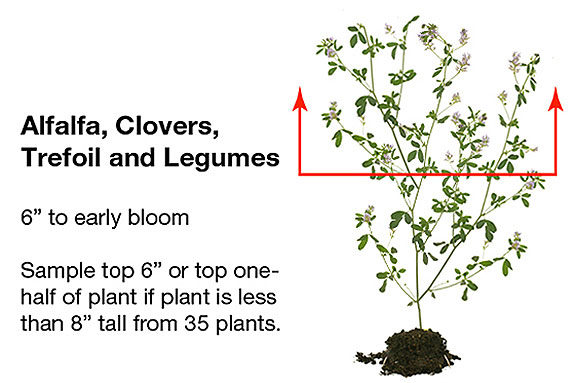Now is a great time to test your corn and alfalfa plants to gain a better understanding of your stand as well as the current condition of your soil.
Why:
Science has revealed there is a delicate balance of approximately 16 essential elements utilized in some way to meet the maximum yield capacity. At the present time, we haven’t tested our soils for every one of them, meaning we likely haven’t been replacing them either.
The good thing is that most growers, who are diligent in soil sampling, grid sampling and plant tissue sampling, have experienced the positive plant health and yield advantages from this precision testing and designer plant diets.
Emerging GPS and computer-based crop management programs have also assisted growers by adding technological tools to help manage all this newly found information and to track the yield and economic benefits.
Depending on the lab you use, some reports for plant samples will reveal the concentration of N, P, K, Ca, Mg, S, Zn, Mn, B, Cu, Fe, Al and Na within the plant. Soil samples submitted with the plant sample will be analyzed for pH, organic matter, P and K, as well as special soil test results.
Nutrient levels will also be interpreted for soil and plant samples to identify any nutrient issues and potentially offer recommendations. It’s important to note that nutrients can then be soil, seed and foliar applied.
When and where:
Tissue sampling should take place as early in the season as possible to properly detect nutrient deficiencies and make adjustments to reduce yield loss. Soil samples should be taken from the same area where plant samples were collected and taken at a six-inch or seven-inch depth.
To take an accurate test, avoid testing plants showing severe signs of stress from factors not related to nutrients. This includes damage from insects, drought or flooding, temperature, chemicals or machinery. Also be sure to test normal plants in the same stage of growth for better evaluation.
How:
When testing alfalfa plants from beginning stages through the first flower, it’s important to sample from the top six inches of the plant. Once samples have been collected, remove foreign particles such as dirt without washing the plant.
Place the samples in a paper bag or large envelope to help prevent them from developing mold during shipment. Soil samples can be put in a waterproof container and should have a correlating label to the field and tissue sample from which it was taken.
Because it’s in early growing stage, collect around 35 samples. When sampling alfalfa closer to or at harvest for comparison, test the whole plant. Collect around 25 of these samples. Additionally, collecting soil samples simultaneously can be helpful when paired with the plant analysis to identify nutrient deficiencies, toxicities and imbalances.
As we continue to develop more cost effective and technologically advanced tests I am encouraged about future yield possibilities. Having the ability to react to situational factors by applying timely nutrition to our fields will offer a great advantage.
I encourage all growers to try an experiment on their farms to better understand their fields and to make more informed decisions moving forward.
Visit the Latham Hi-Tech Seeds website or blog for more information. FG
—From PFG e-newsletter, June 2013
Corey Catt
Forage Products Manager
Latham Hi-Tech Seeds














